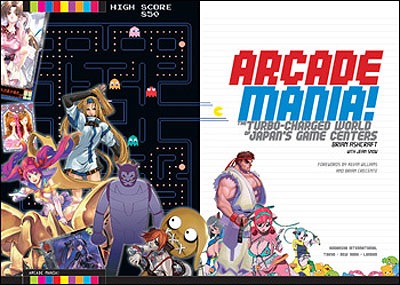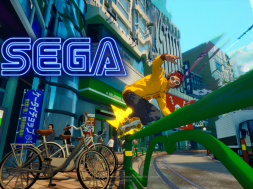
Arcade Mania!: The Turbo-Charged World Of Japan’s Game Centers
 Title: Paranormality
Title: Paranormality
Author: Brian Ashcraft, Jean Snow
Publisher Info: Pan Books, 2012
To all intents and purposes, the arcade scene is dead. The days of dark, smoky rooms full of moldering Street Fighter II cabinets sitting next to poker machines and air hockey, all occupied by the hunching, intense forms of captivated players chasing high scores are little more than memories, drifting in the wake of dominance of consoles, PCs and mobile apps exploding into households across the world. The best most arcade gamers can hope for nowadays is that there’s a new Time Crisis cabinet in the corner next to the fruit machines that hasn’t been broken or set on fire.
Unless of course, you live in Japan, where arcades, and more importantly arcade gaming, are less an excuse to extract money from children and more a vibrant cultural institution, as evidenced in this classy guide to the country’s game centers from Kotaku editor Brian Ashcraft and Japan Times columnist Jean Snow.
Set up and colour-coded to resemble the layout of a typical game center of the kind that appear all over Japan, Arcade Mania! reads like a collection of magazine articles (not surprising given the authors’ pedigrees), with chapters devoted to everything from claw machines to retro arcade games, right through to games of chance and quirky, fantastic dedicated cabinets. Each section is peppered with copious screen-shots, photos of games and gamers in action, and interviews with the cream of the crop from Japan’s gaming community, a cast of characters ranging from the creators of some of the most popular games in the world to a working mother whose hobby has made her famous as the Queen of the Claw Machine, making for a nicely packaged guide for both arcade aficionados and newbies alike right from the off.
But the difference between this and other guides like “1001 Games You Must Play Before You Die” is the tangible sense of passion for the subject you get when reading it, both from the authors, who clearly have more than a few hours of gaming under their belts, and from the players and creators, who are players too.
 Whether it’s from factual tidbits – the model who has built her career exclusively on being the face of the sticker-photo booths that are popular with young arcade going girls; the fact that being a full-time PC gamer in Japan can be a profession and not an addiction – or from the reminiscences of the interview subjects on how they started on the road to doing the thing that has now more or less taken over their lives, the reverence that’s given to the arcades as a culture rather than a busines is a real eye-opener, especially to a Western gamer, and it really is difficult when reading not to get a certain vicarious thrill from the loving descriptions of gaming in the moment that the authors use to draw you into the world..
Whether it’s from factual tidbits – the model who has built her career exclusively on being the face of the sticker-photo booths that are popular with young arcade going girls; the fact that being a full-time PC gamer in Japan can be a profession and not an addiction – or from the reminiscences of the interview subjects on how they started on the road to doing the thing that has now more or less taken over their lives, the reverence that’s given to the arcades as a culture rather than a busines is a real eye-opener, especially to a Western gamer, and it really is difficult when reading not to get a certain vicarious thrill from the loving descriptions of gaming in the moment that the authors use to draw you into the world..
It also effectively shoots Japanese culture as a whole through the prism of the arcades, throwing a weather eye on some of the interesting and often outlandish social customs that define the country; Japanese girls are not allowed to be seen in their school uniforms outside of school hours, for example, making them more likely to stay home instead of changing to hit the arcades; the aforementioned sticker-photo booths, apart from just allowing you to put personal messages and backgrounds on full-body pictures, also clear facial imperfections, increase bust size and, tellingly, lighten skin tone and colour, a nod perhaps to Japanese fascination with American culture. And combining ancient game of chance mah jongg with pornography is a uniquely Japanese concept.
The whole experience is so enthusiastically executed and so enjoyable that it almost feels like nit-picking to point out the little niggles that stop it short of being the perfect read, but they can’t be denied. As good as the book is as a whole, the chapters do tend to get repetitive, with some information popping up again and again (seriously, how many times do we need to hear that Namco’s name has been changed to NBGI?) to take you out of the atmosphere. And it lacks a big-picture conclusion to go with the introduction at the start, instead cutting off abruptly after the final chapter, resulting in a bit of an anti-climactic ending.
Perhaps the disappointment with how it finishes comes from not wanting the ride to end, since the journey up to that point is nothing short brilliant. Whether your favourite game is Wii-Fit or Ikaruga – hell, if it’s tiddlywinks – Arcade Mania! should top your reading list.










